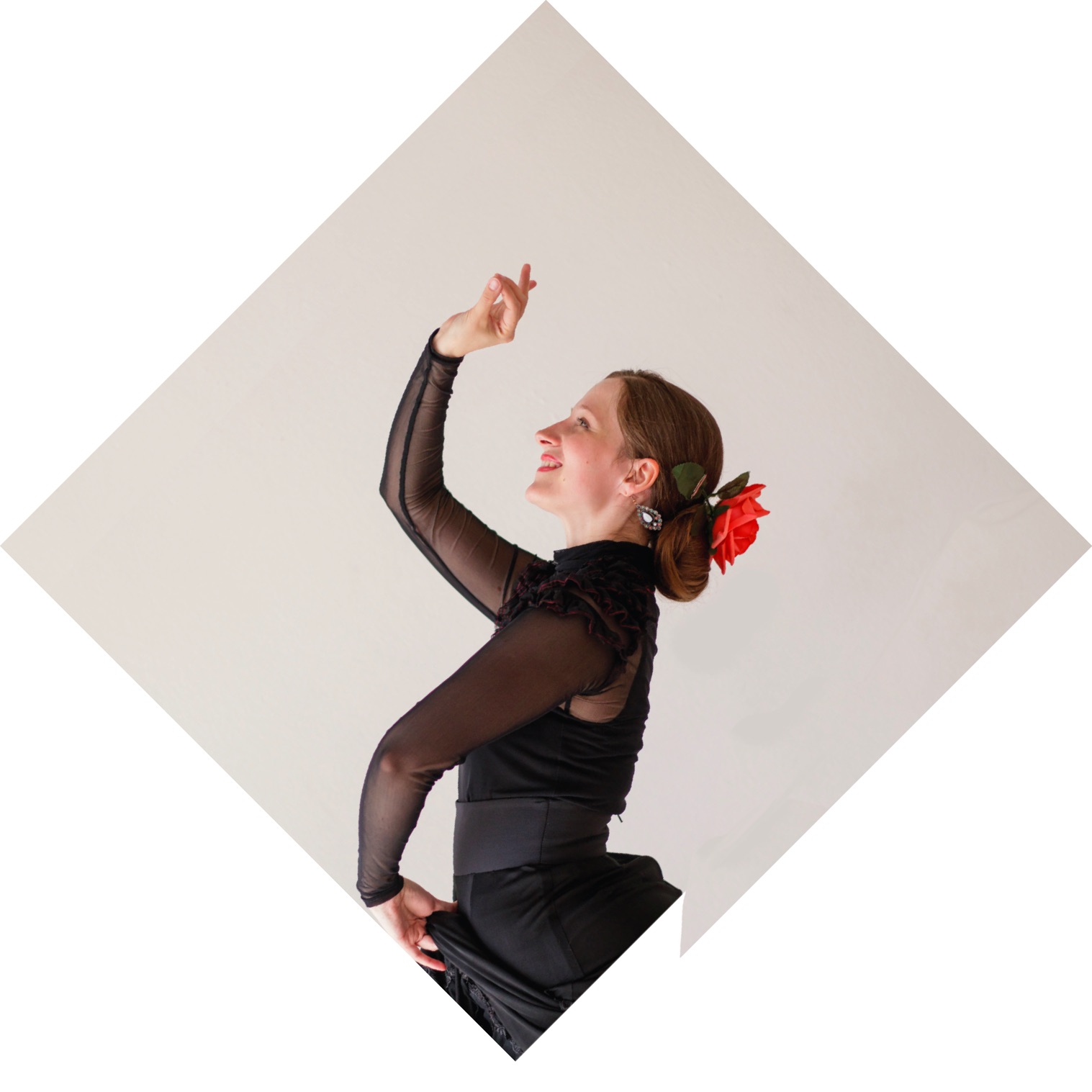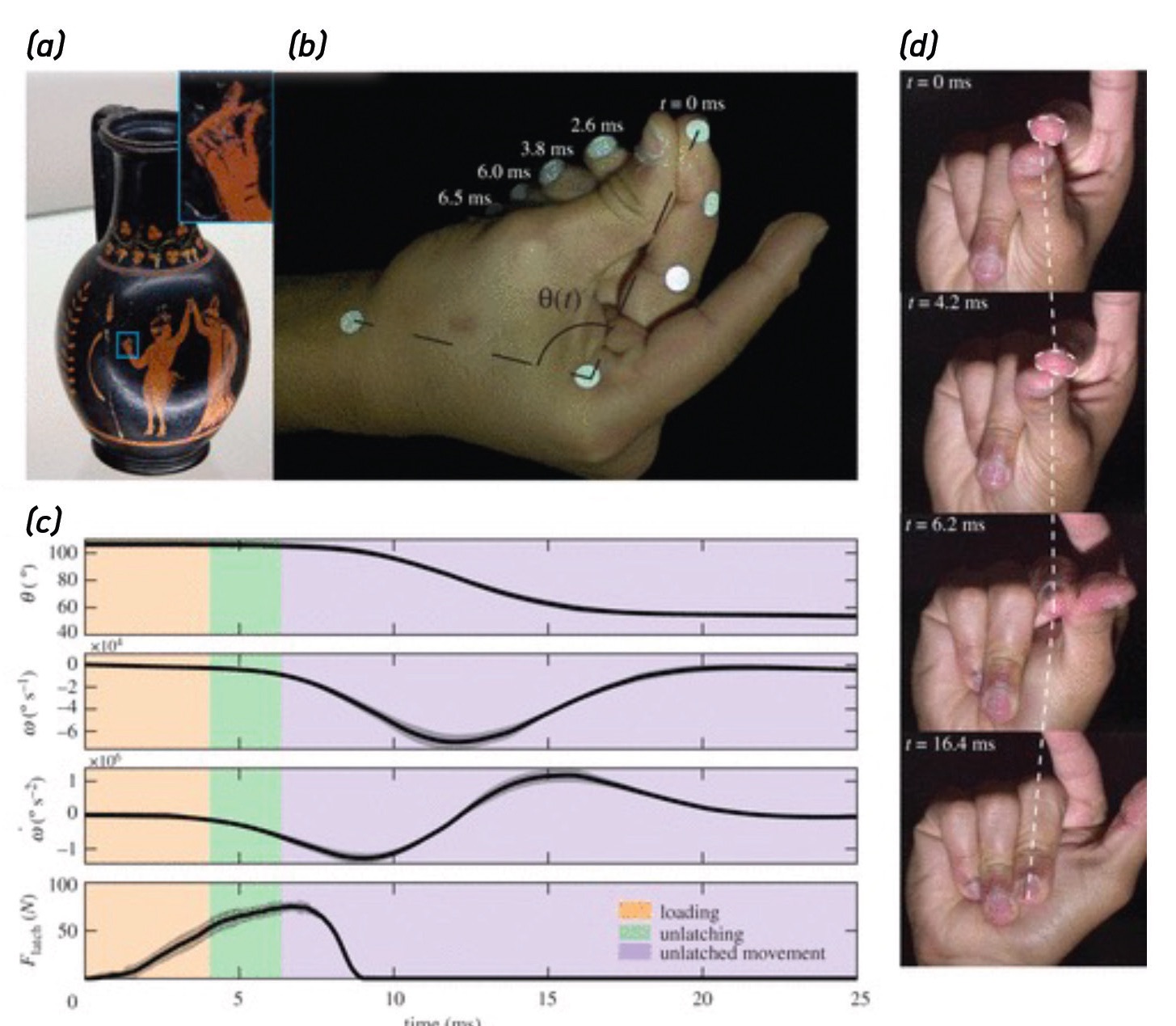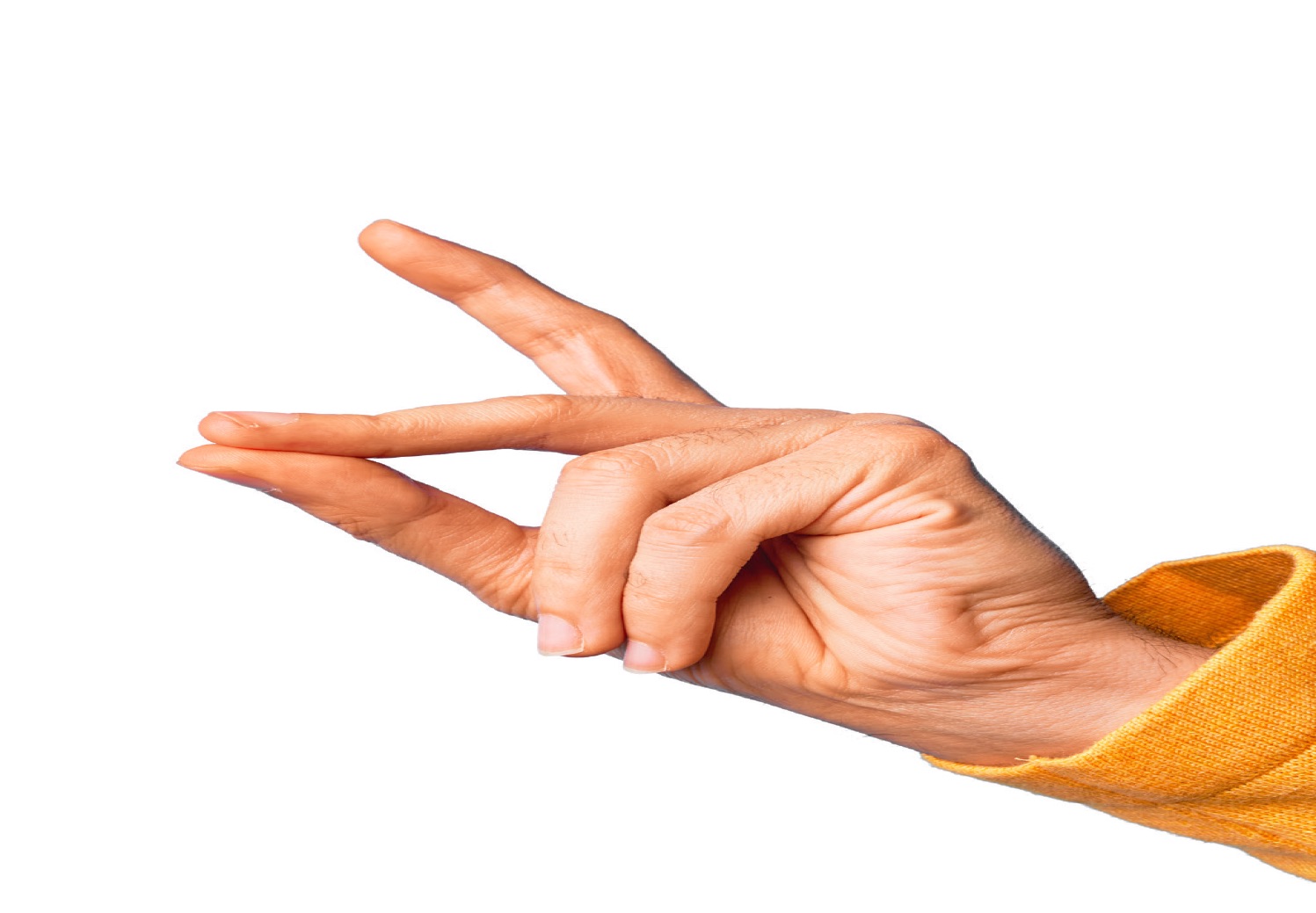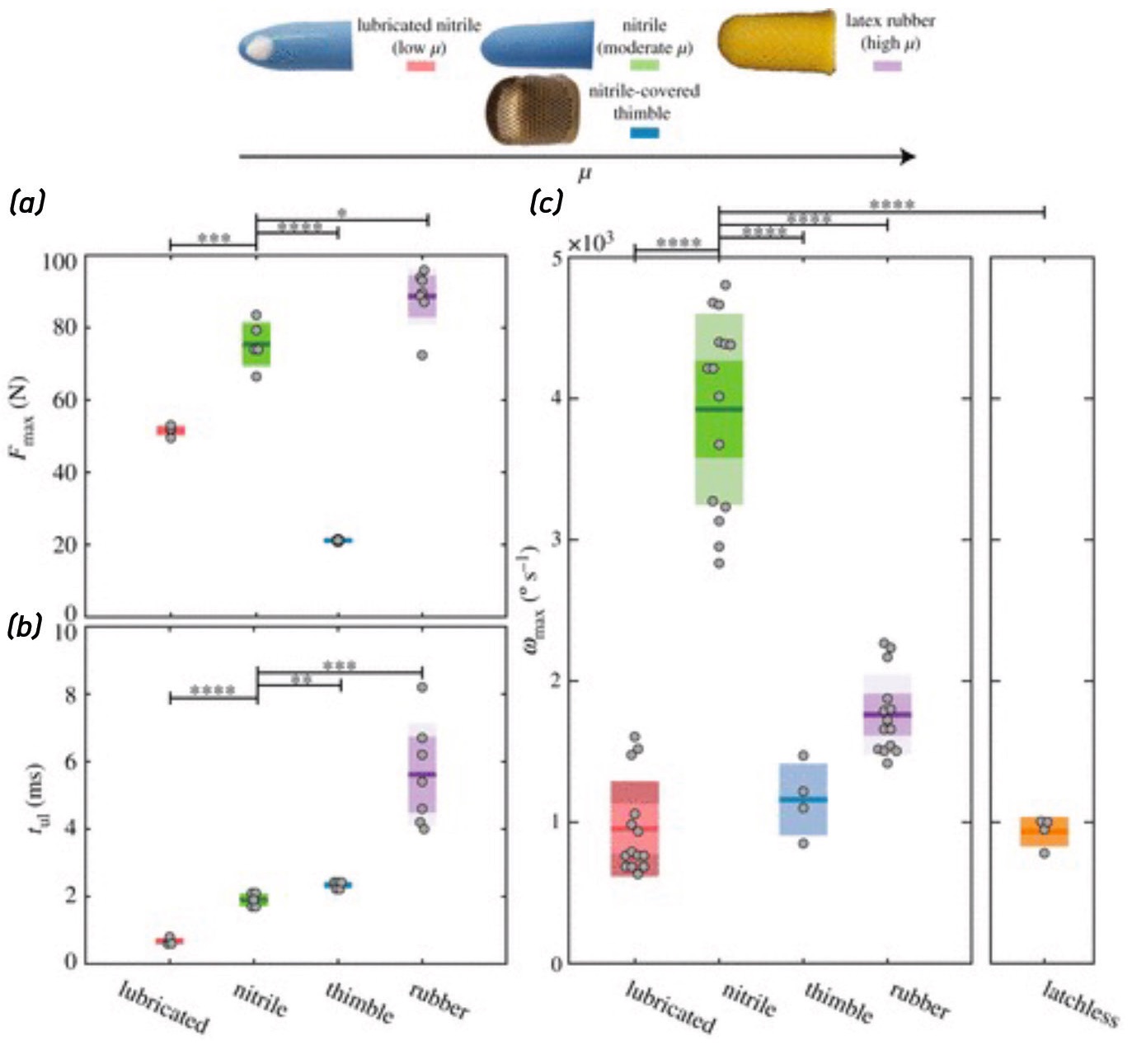Friction and the physics of finger snaps
Drs. Wilfred T. Tysoe & Nicholas D. Spencer, Contributing Editors | TLT Cutting Edge February 2022
Finger snapping provides a simple model for studying the effect of friction on latch-mediated, spring-actuated systems in biology.

People snap their fingers for a myriad of reasons: to attract a waiter if you are rude, to keep time with the rhythm of the music if you are cool or when dancing flamenco. A shared finger snap is a common way of ending a handshake between friends in parts of West Africa. Snapping the fingers is not a recent phenomenon; pottery from 320-310 BCE Greece
(see Figure 1a) shows a dancer snapping her fingers.
Phenomena similar to finger snapping are common in biological systems and are described as latch-mediated, spring-actuated systems. Here, elastic energy is stored in the system for some period while being held in place by a latch. Releasing the latch allows the stored potential energy to be dissipated in a relatively short period of time. In the case of snapping fingers, latching is assisted by the friction forces between the thumb and middle finger, but little is understood about how this influences how fingers snap.
This question has been investigated by professor Saad Bhamla with students Raghav Acharya and Elio Challita from Georgia Tech, with professor Mark Ilton of Harvey Mudd College in California. Snapping experiments were carried out using gloves of different materials to vary the friction from low (Cetaphil-lubricated nitrile), to intermediate (dry nitrile) to high (rubber). In some cases, copper thimbles were placed on the middle finger and thumb to test the impact of compressibility, which also impacts friction, on the finger snap.
 Figure 1. The finger snap is shown in (a) on a piece of Greek pottery from 320-310 BCE and (b) shows a side view of motion at different times. (c) Kinematics and dynamics of the finger snap. Angle measurements taken between points on the wrist, knuckle and tip of the finger, force measurements taken via pressure sensors placed between the middle finger and thumb. (d) Stills of a finger snap from the front showing the visible compression of the fingertip as energy is stored before being released and causing the nearly one-dimensional motion of both the thumb and the middle finger. Figure published with permission from Ref. 1.
Figure 1. The finger snap is shown in (a) on a piece of Greek pottery from 320-310 BCE and (b) shows a side view of motion at different times. (c) Kinematics and dynamics of the finger snap. Angle measurements taken between points on the wrist, knuckle and tip of the finger, force measurements taken via pressure sensors placed between the middle finger and thumb. (d) Stills of a finger snap from the front showing the visible compression of the fingertip as energy is stored before being released and causing the nearly one-dimensional motion of both the thumb and the middle finger. Figure published with permission from Ref. 1.
The snapping response was measured by placing reflective tapes on the wrist joint and the fingers and knuckles
(see Figure 1b) to record the motion with a high-speed camera, and the time-dependent images were analyzed to measure the angular displacement, angular velocity
(ω) and acceleration
(see Figure 1c). The force developed during the snap was measured at the same time using resistive force sensors placed between the thumb and middle finger.
The various phases for the linear motion during snapping
(see Figure 1d) are shown in Figure 1c. After initially loading and then unlatching to induce a rapid acceleration, the finger impacts the hand, generating weak shock waves that give rise to the characteristic popping sound.

The effect of friction on various parameters is summarized in Figure 2. The forces exerted during snapping increase with friction
(see Figure 2a), as do the contact times
(see Figure 2b), which means that more energy is lost to friction. The competition between these two effects leads to the maximum angular velocity
(ωmax) being highest for the nitrile-covered fingers with moderate friction and is much higher than a “latchless” snap, where there is no resistance between the thumb and finger.
 Figure 2. Illustration of the effect of friction on finger snapping. (a) Variation of Fmax, the maximum force exerted between the two fingers. (b) Variation of tul, the contact time between the two fingers from first motion. (c) Variation of ωmax. Figure published with permission from Ref 1.
Figure 2. Illustration of the effect of friction on finger snapping. (a) Variation of Fmax, the maximum force exerted between the two fingers. (b) Variation of tul, the contact time between the two fingers from first motion. (c) Variation of ωmax. Figure published with permission from Ref 1.
Such careful experiments yield insights into biological latch-mediated, spring-actuated systems. They also provide an opportunity for tribologists who missed being in the lab over the holidays to carry out simple experiments at home to further investigate the effect of friction and surface modification on the energy released during finger snapping.
FOR FURTHER READING
1.
Acharya, R., Challita, E. J., Ilton, M. and Bhamla, M.S. (2021), “The ultrafast snap of a finger is mediated by skin friction,”
Journal of the Royal Society Interface, 18, 20210672.
Eddy Tysoe is a distinguished professor of physical chemistry at the University of Wisconsin-Milwaukee. You can reach him at wtt@uwm.edu.
Nic Spencer is emeritus professor of surface science and technology at the ETH Zurich, Switzerland, and editor-in-chief of STLE-affiliated Tribology Letters journal. You can reach him at nspencer@ethz.ch.